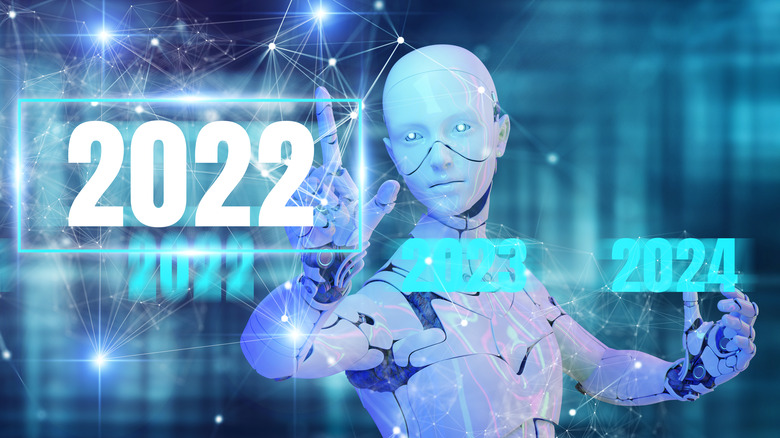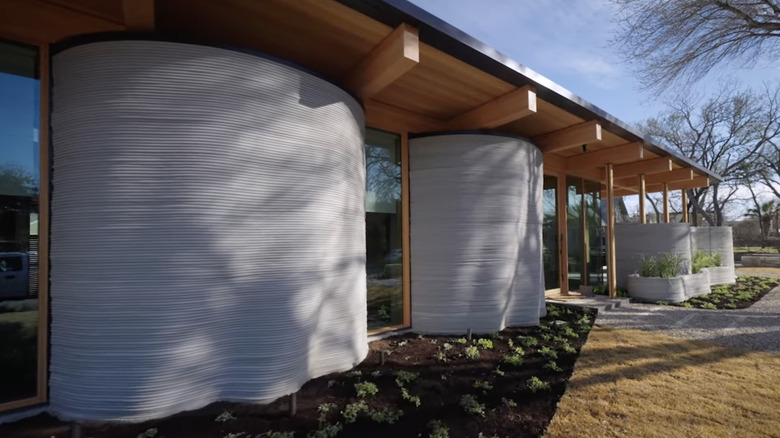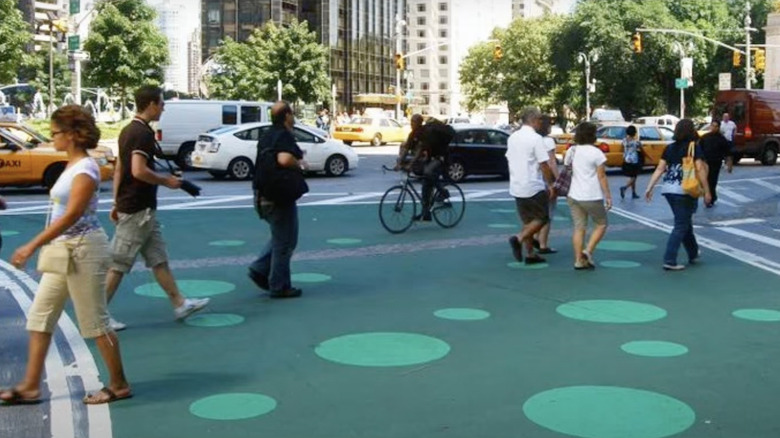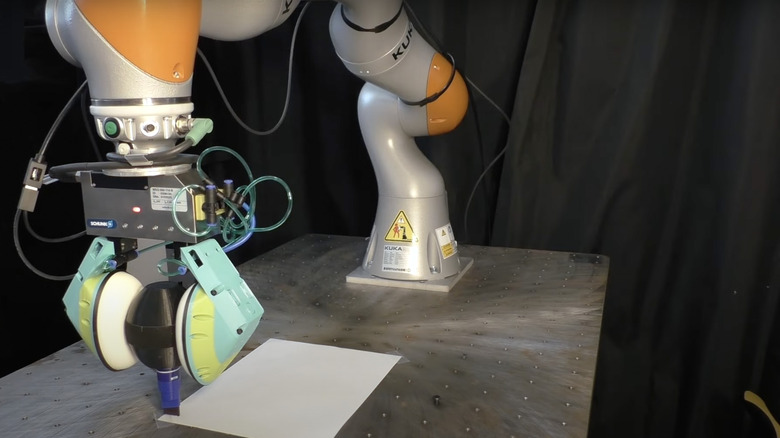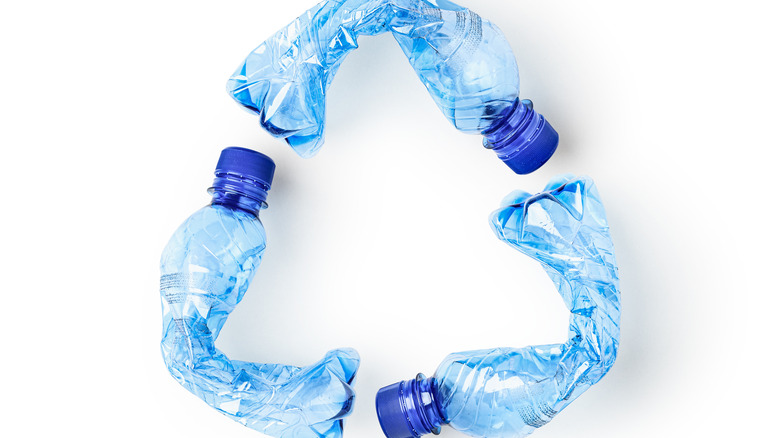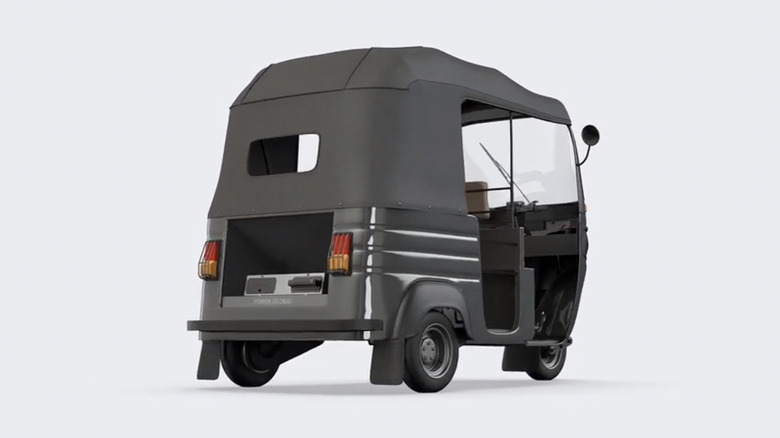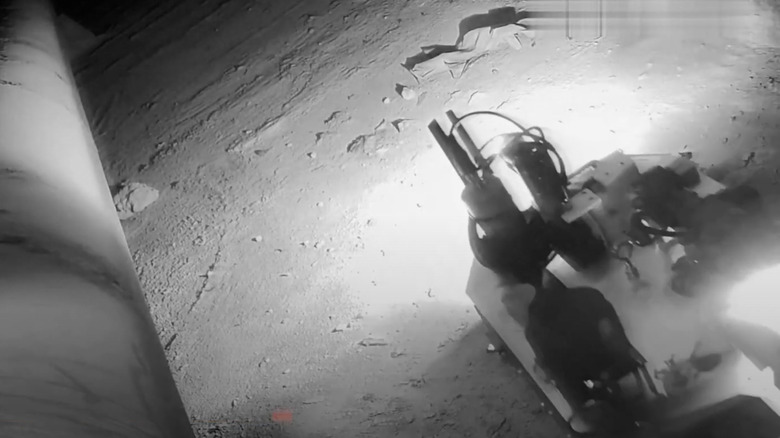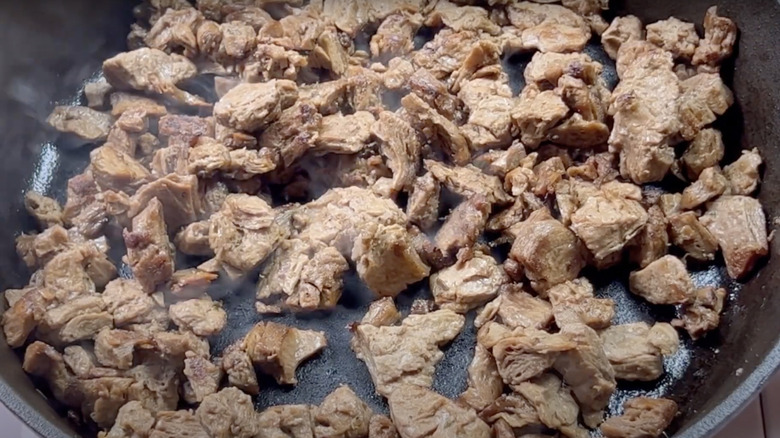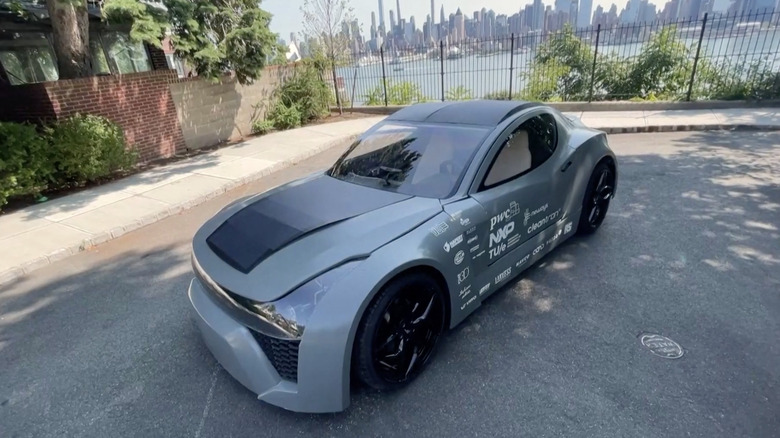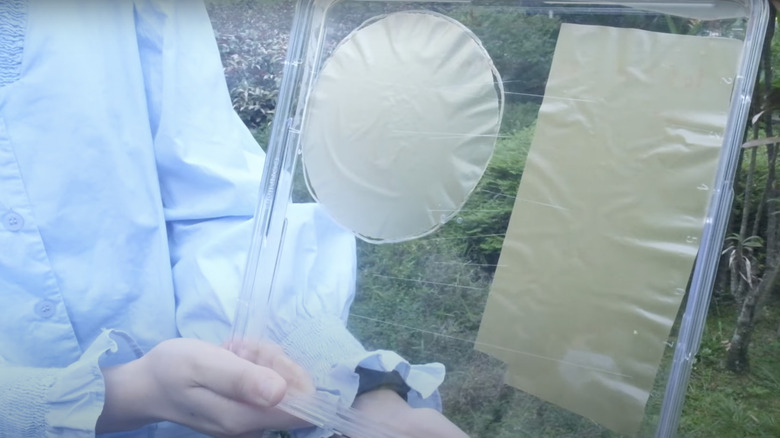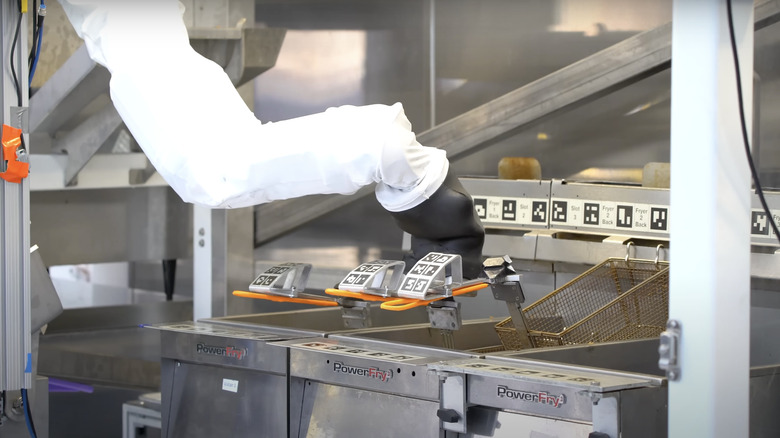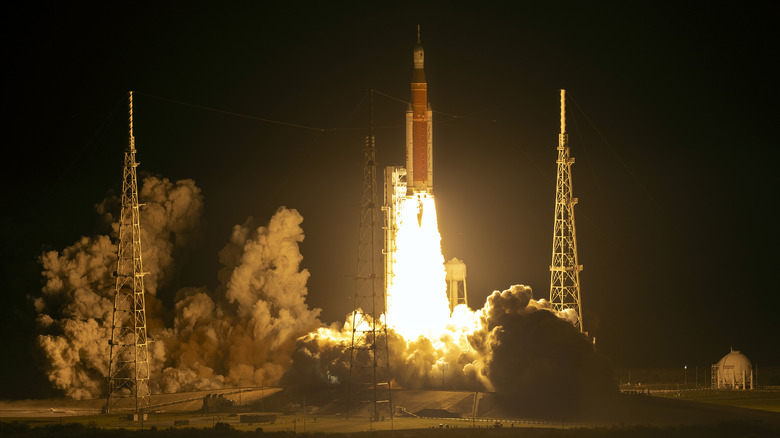The Greatest Inventions Of 2022
The world faced numerous crises in 2022, and overcoming the biggest of them is going to be an immense, long-term challenge. The UN Foundation listed a few of the most pressing, covering topics from poverty to pollution, environment to equality. The greatest concerns are protecting the environment and addressing global poverty, both of which impact billions of people. But humanity is nothing if not ingenious. Necessity, as they say, is the mother of invention, and humans have been inventing things to solve problems for as long as humans have existed on Earth. Britannica highlights several inventions in the past, dating back millennia, which have revolutionized our way of life and quite literally changed the world.
While not all issues have a single, easy solution, not a year goes by without new and increasingly impressive innovations. Alongside novelties and small things to make people's everyday lives easier or more fun, a handful of the new things created in 2022 may have a substantial impact on the world. Some of these may seem small or even inconsequential at first, but, with time and effort, any of them could blossom into something truly remarkable. To address the greatest issues of our time, great inventions are required. Here are a handful of the things created in 2022 with the potential to be just that.
3D-printed houses
Homelessness is a growing global issue, and, according to the UN, in 2020, an estimated 1.6 billion people across the world were either homeless or lived in "inadequate housing conditions". This is a problem even in the wealthier parts of the world, with the New York Times reporting that housing shortages are affecting more and more people across the U.S. One way to help with this problem is by making housing both cheaper and faster to construct, and one of 2022's innovations could be a game changer.
House Zero was constructed in 2022 by a company called ICON. Instead of being built brick by brick, it was 3D printed. As Dezeen explains, House Zero was designed in a way to better connect people with nature and the outside world, a principle known as biophilic design, using rounded and organic-looking designs which improve airflow. The walls are made from a material dubbed Lavacrete, which provides both insulation and protection from the elements. Constructed in just 10 days, the whole process could also make homes cheaper to build, with printers operating on-site with raw materials. The next stage in ICON's plans, after the proof-of-concept of House Zero, is to construct an entire community with 100 houses.
Cooling the urban heat islands
As climate change becomes an ever more pressing concern, one serious problem for built-up areas is the urban heat island effect. The EPA explains that this is caused by the way urban materials like asphalt and concrete absorb sunlight, storing and emitting more heat than rural landscape. This causes localized hotspots in cities, with temperatures up to 7°F higher than surrounding land. The effect of these heat islands also touches on an equality issue, with a study in Nature explaining how marginalized and poor communities are disproportionately affected by heat islands, and the hazards this can cause. Affected people are statistically more at risk of heat-related mortality than other extreme weather like hurricanes or floods.
An innovation that can help to combat this has been developed by a company named StreetBond, consisting of paint which is better at reflecting sunlight, helping to prevent heat from building up in city environments. Courtesy of the GAF Cool Community Project, EcoWatch reports that the colorful paint is based on epoxy acrylic, and reflects both the visible and infrared parts of sunlight. The paint has already been used in Los Angeles, leading to surface temperatures up to 12°F cooler than they would otherwise be. With hotter summers and increasingly frequent heatwaves, working to reduce temperatures in big cities like LA could genuinely help to save lives.
The brightly colored paint has also found use to make neighborhoods look brighter, in street murals and community areas like playgrounds.
Electric aircraft
In a world where everyone is becoming increasingly conscious of climate change and carbon emissions, air travel is becoming a contentious issue as a notable source of atmospheric carbon dioxide. According to the Air Transport Action Group, around 2.1% of all carbon emissions come from the aviation industry. In an effort to make air travel more environmentally sound, 2022 saw a successful test flight of an entirely electric airplane.
Named Alice after the title character in "Alice in Wonderland," the small passenger plane is powered by electric engines, as GeekWire reports. It was designed and created by a company called Eviation and is powered by magniX's electric propulsion systems. MagniX's goal is to electrify air travel with propulsion systems that don't burn any hydrocarbon fuels. The first Alice test flight was brief, at only 8 minutes and an altitude of 3,500 feet, but it will hopefully pave the way for an all-new kind of passenger plane. The current target is to power short-range light aircraft, but there's a good chance this could eventually be scaled up as the technology involved continues to improve.
As well as airplanes, magniX also successfully tested an electric helicopter in 2022, as reported by Vertical. Perhaps in the near future, travelers will be able to catch flights without needing to worry so much about their contribution to climate change.
Robots with a sense of touch
Robots usually call to mind unfeeling metal machines, but researchers at MIT have been busy developing robots with a more sensitive side. Per MIT News, the newest robotics unveiled in 2022 are "soft robots" which can apply careful amounts of force, allowing them to grasp and use tools. Where early robots would use tools physically attached to them, the newest creations are even able to carefully hold a pen and write with it. When the robots grasp an object, they use a system of sensors to get tactile feedback – which is a technical way of saying that the robot can effectively feel what it's holding to judge how much pressure it needs to use.
This follows another touch-sensitive robot reported earlier in the year. According to The Robot Report, this is a robot gripper designed to be dextrous. Made from silicone and acrylic, it uses a small camera to detect how the soft gripping materials are squeezed as it handles an object. Remarkably, this robot is sensitive enough that it can even "feel" the surface of objects, picking out remarkably fine details like individual seeds on the surface of a strawberry.
As well as being used to construct robots, innovations like these could potentially find use in prosthetics. NPR explains that creating prosthetic limbs with a sense of touch is still a major goal among researchers, making prosthetic hands more intuitive for amputees by giving them back their sense of touch.
Light from seawater
It may be difficult to believe while reading an article on the internet, but a shocking number of people in the world do not have access to electricity. According to the IEA, there are around 770 million people in the world with no electricity in 2022, mostly living in the global south. That's just under 10% of all people on Earth. One innovation in 2022 which could help provide power to those currently without it is courtesy of a Colombian company named E-Dina, which has developed a lantern that can produce light using only seawater.
Named WaterLight, the smart little device can take half a liter of salt water and produce an impressive 45 days of light. As Very Compostable explains, the energy comes from an electrochemical reaction between the salt water and a magnesium electrode inside the WaterLight, generating an electric current. As well as being built entirely from recycled materials, the lanterns can also provide energy to charge small electronic devices. It has an impressive lifetime, too, lasting for 5,600 hours, which is longer than incandescent or halogen lightbulbs.
For those who don't live near the sea, Dezeen notes that in a pinch, a WaterLight can even produce energy from urine.
Sustainable plastic
Single-use plastics make up a huge amount of the world's garbage. Disposable items, from drinks bottles to wet wipes, frequently end up in the environment and, according to the European Commission, disposable plastic items account for around 70% of the litter which finds its way into the seas around Europe. Not only is this unsustainable, but the raw materials for plastics also come from the oil industry. Researchers, both industrial and academic, have been researching greener alternatives for some time, and one promising new kind was unveiled in 2022. Named AirCarbon, it's a carbon-negative material. In other words, its manufacturing process captures more carbon dioxide than it produces.
Created by Newlight Technologies, Sustainability Times explains that AirCarbon is specifically made as an alternative to traditional single-use plastics, with the aim of replacing everyday items like plastic cutlery and straws. It's made from methane and carbon dioxide and rather than being synthesized with the traditional kind of chemical reactions, it's created by ocean microbes. Even better, Plastics News elaborates that some microbes living in the wild will even be able to use it for food after it's been discarded, making it biodegradable. Newlight is clearly serious about their sustainable plastic too, having recently made moves to start producing it on a larger scale, aiming to help reduce both greenhouse gasses and plastic waste in the process.
Swappable electric vehicle batteries
Air pollution is a serious problem in many parts of the world, and one region which is hit particularly hard is India. Home to a hefty percentage of the world's population, India is full of vibrant, bustling cities, but it also suffers from serious air pollution problems. Sadly, as Bloomberg reports, the poor air conditions are only getting worse. With over 90% of Indians affected by hazardous levels of air pollution, tackling traffic emissions is one important way to help clear the smoggy skies, and electric vehicles are a good way to work towards this goal.
To make light electric vehicles easier to maintain, Power Global recently announced a swappable electric battery it calls an eZee power module. The Hindu reports that these batteries are intended for light vehicles like auto-rickshaws, which are a common sight across India. When available, the eZee modules will be manufactured locally, and aim to make life easier for electric vehicle owners, cutting out the need for long charging times and allowing drivers to quickly "refuel" without disrupting their busy schedules. Based in California, Power Global promise that their batteries could save drivers up to 180 rupees a day in fuel costs. Even better, small businesses who host an "eOsk" charging station will be able to use the batteries when any power outages occur, because they'll have a ready supply of stored energy to use if ever a power grid fails.
Radiation detecting robots
Nuclear energy has been widely used to generate electricity for years now. Long enough in fact, that many older reactors will soon need to be retired. Nuclear Engineering International explains that decommissioning nuclear plants is an increasingly important part of the nuclear industry, and by 2030, it's likely that up to a quarter of current nuclear reactors may need to be shut down for good. However, until old reactors are certain to be safe for humans to approach, the best course of action is to use robots to go into the places where people cannot, and one innovative robot was created and tested in 2022 to do exactly that.
Named Lyra, the intrepid little robot was created by the U.K.'s University of Manchester, and it's a veritable Swiss Army knife of scientific instruments. Lyra is fitted with cameras and a robotic arm, as well as laser scanners to help it safely find its way around. Most impressive though, are its five radiation detectors, which can identify a number of radioactive hazards like x-rays, gamma rays, and high-energy neutrons. Designed to be able to manage difficult terrain like rubble, researchers successfully gave Lyra a real-world test in a disused nuclear laboratory, demonstrating that it can map out dangerous areas so engineers can plan how to safely decommission similar areas in the future. Most importantly it's designed to be a low-cost machine, so it can be more widely used.
Steak that's healthier for people and environment
It's an uncomfortable truth that people in the modern world eat too much meat. To help alleviate climate change, The Guardian reports that the world needs a "huge reduction in meat-eating," advising that wealthy western countries may need to cut their beef consumption by about 90%. This is a hefty target, but meatless alternatives are steadily becoming both more widely available and more similar to the meat products they're intended to provide an alternative for. Fittingly, one of 2022's innovations was the latest version of steakless steak.
Beyond Meat is now well known for producing meat-free alternatives with both good flavor and texture. Their latest creation, as CNN reports, is Beyond Steak. Not a full steak but a pack of pre-cut steak tips, it's intended to be used to make things like stir fry and fajitas. Already available for purchase in 2022, the steak tips are completely plant-based, kosher, and low in fat. They're based on fava bean powder and wheat gluten, with a healthy nutritional boost. Steak has long been a difficult food to reproduce in meat-free form, but with products like this promising the right taste and texture, meat substitutes are showing that they're still continuously improving.
A carbon-negative car
Traffic is a serious contributor to air pollution, and even electric vehicles carry a heavy toll in the form of greenhouse gas emissions. While they may produce no carbon dioxide while being driven, the manufacturing process is still anything but carbon neutral, and the big problem lies in the batteries. Manufacturing batteries is still a messy business, causing enough emissions that electric vehicles need to be driven for thousands of miles before they're on par with other cars. As a solution, a student team from the Eindhoven University of Technology designed a greener vehicle to drive. As Euro News explains, their car is actually carbon-negative, capturing more carbon dioxide the more it's used.
The prototype is known as "Zem," and CNN reports that its electric battery is intended to be powered by solar energy, to make the biggest difference to the environment. It's also fitted with a device that captures carbon dioxide while on the road, making it the first car to reduce atmospheric carbon dioxide when driven. The entire vehicle is designed with sustainability in mind, being constructed with 3D-printed bodywork made from recycled plastic, providing a two-in-one bonus of reducing waste and avoiding the emissions of high-temperature factory methods. Sucking up CO₂ as it goes, Zem compensates for the excess emissions caused by manufacturing car batteries, making everything about it much healthier for the environment. For a final flourish of style, the interior is upholstered with vegan leather, made from pineapples.
Reprintable paper
While one big aim of technology is a paperless future, it's a fact that paper is still widely used across the world. It's unlikely that the world will be truly free of paper for some time, if ever, and while paper can be produced from sustainable forests (via EPPA), there are potentially better solutions that don't require trees to be cut down at all. One example, produced by researchers at Singapore's Nanyang Technological University (NTU), is made from pollen.
The mere mention of pollen will make a lot of people concerned about allergies, but the pollen paper is reportedly hypoallergenic. Its real appeal, though, is the fact that it's reusable, according to a study published by Advanced Materials. Where regular paper can only be used once before being discarded, the pollen paper can be reused multiple times while suffering no damage. A laser printer can put high-resolution color images onto this paper, and it can then be simply "unprinted," leaving it ready for a second use. Being able to be printed on up to eight times, the researchers hope that their pollen paper could be a more sustainable material to use in offices, helping to lessen the environmental impact of conventional printer paper, and allowing offices a little more flexibility in situations where printed materials are easier to work with than digital documents.
A robot fry cook
Fast food kitchens can be hazardous places to work. According to Business Wire, 2.8 million fast food workers suffered burns in 2015, with fryers being responsible for 54% of them. Over half of the people involved had been burned multiple times while working. Needless to say, as a report by 9Honey points out, the fry station is one of the most unpleasant and least popular jobs in any kitchen. One way to make life slightly easier in kitchens is to get robots to take care of this hazardous job, which is exactly what one California tech company can help with.
2022 saw Miso Robotics demonstrate a new robot with the endearing name of Flippy 2. Designed to be able to fit into even tight kitchen spaces, the company boasts that its robots can fry almost anything, speeding up one of the most onerous kitchen duties in fast food restaurants. Reuters reports that Flippy 2 is essentially a big robotic arm, guided by cameras and AI but otherwise not unlike the ones found in car factories. It takes instructions and prepares food without needing to worry about getting burned. While this will save workers an unpleasant task, part of the motivation was that preparing fries is often a bottleneck in fast food restaurants, slowing down the whole process. Perhaps both staff and customers might appreciate a robotic helping hand.
The world's largest rocket
The most dramatic innovation of 2022 is also its largest. Veteran space travel experts, NASA, are busily making plans to send astronauts back to the moon for the first time since the mid-20th century, to carry on the lunar exploration which awed the world when Apollo 11 first landed there in 1969. To accomplish this, NASA has constructed the most powerful rocket ever to be successfully launched. Called simply Space Launch System or SLS for short, the name may be rather less inspiring than Saturn V or Falcon 9, but it's an impressive piece of machinery nonetheless. Described as a "super heavy-lift launch vehicle", it has one main goal – to send astronauts on the kind of deep space missions which need a powerful kick to escape from Earth's gravity. According to SciTechDaily, SLS can accomplish this with 8.8 million pounds of thrust.
Rockets may not seem immediately useful to those of us on the ground, but it's easy to forget how many valuable innovations have come from NASA and other space agencies. Space travel is a hotbed of useful inventions, and it's already given humanity a wealth of technologies that we now rely on in our day-to-day lives. Among other things, per USA Today, space travel has yielded innovations in water filtration, air purification, solar panels, and freeze-dried foods, among other things. With more NASA rocket launches planned for the future, who knows what exciting new inventions humanity may see in the coming years?
